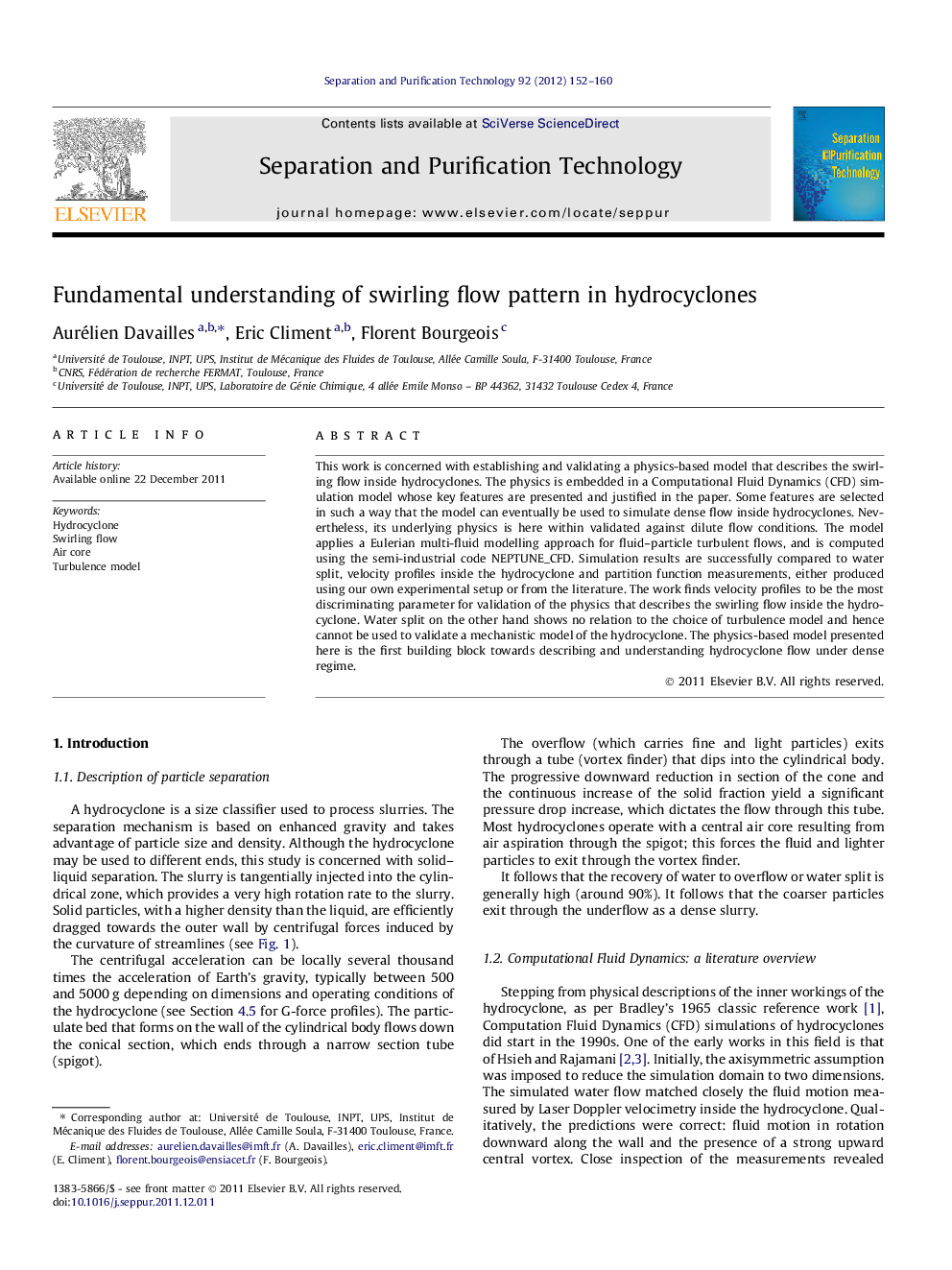| کد مقاله | کد نشریه | سال انتشار | مقاله انگلیسی | نسخه تمام متن |
|---|---|---|---|---|
| 642164 | 1457027 | 2012 | 9 صفحه PDF | دانلود رایگان |

This work is concerned with establishing and validating a physics-based model that describes the swirling flow inside hydrocyclones. The physics is embedded in a Computational Fluid Dynamics (CFD) simulation model whose key features are presented and justified in the paper. Some features are selected in such a way that the model can eventually be used to simulate dense flow inside hydrocyclones. Nevertheless, its underlying physics is here within validated against dilute flow conditions. The model applies a Eulerian multi-fluid modelling approach for fluid–particle turbulent flows, and is computed using the semi-industrial code NEPTUNE_CFD. Simulation results are successfully compared to water split, velocity profiles inside the hydrocyclone and partition function measurements, either produced using our own experimental setup or from the literature. The work finds velocity profiles to be the most discriminating parameter for validation of the physics that describes the swirling flow inside the hydrocyclone. Water split on the other hand shows no relation to the choice of turbulence model and hence cannot be used to validate a mechanistic model of the hydrocyclone. The physics-based model presented here is the first building block towards describing and understanding hydrocyclone flow under dense regime.
► A CFD hydrocyclone model has been validated against experimental data.
► The air core can be modelled using a solid cylinder with free slip boundary condition.
► Rij-ϵ turbulence model is suited for simulating the physics of hydrocyclones.
Journal: Separation and Purification Technology - Volume 92, 18 May 2012, Pages 152–160